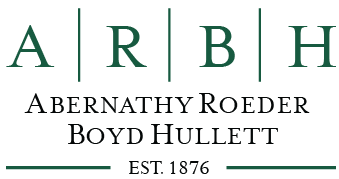The Equal Employment Opportunity Commission (“EEOC”) issued updated guidance to help employers navigate the ADA and other federal equal employment opportunity laws, and ensure compliance with the same during the current COVID-19 pandemic.
Additionally, the EEOC addressed COVID-19 related questions submitted in a webinar featuring the Associate Legal Counsel of the EEOC, the Senior Attorney Advisor for ADA and the Genetic Information Nondiscrimination Act of 2008 (“GINA”), and the Acting Assisting Legal Counsel for the ADA and GINA.
Here is helpful information from the updated guidance and webinar.
- The laws enforced by the EEOC do not hinder employers from following the COVID-19 guidance from the Centers for Disease Control (“CDC”), federal, state, or local public health authorities.
- The laws enforced by EEOC, which include Title VII, the Equal Pay Act of 1963, the Age Discrimination in Employment Act of 1967(“ADEA”), the ADA, Sections 501 and 505 of the Rehabilitation Act of 1973, and GINA, all continue to apply during the COVID-19 pandemic.
- The EEOC will continue to actively pursue violations. For example, since March 27, 2020, the EEOC has taken an active role and sued companies such as Smashburger, a Nursing Home Operator, Blue Sky Vision, and Telluride Express for violations.
- It is unclear at this time if COVID-19 is, or could be, a disability under the ADA.
- Employers are permitted to take the body temperature of employees that physically come into the workplace during the COVID-19 pandemic. This is a change as of March 21, 2020, due to CDC guidelines.
- Employers may ask all employees if they have COVID-19, symptoms associated with COVID-19, and/or if they have been tested for COVID-19.
- Employers may exclude employees from the workplace if they have COVID-19, or symptoms associated with COVID-19. The exclusion applies only to employees who physically come into the workplace.
- GINA prohibits employers from asking employees medical questions about an employee’s family members.
- Tip: Instead of asking an employee who is physically coming into the workplace if they have family members who have COVID-19, symptoms associated with COVID-19, or have been tested for COVID-19, ask if the employee has been around any person they know or suspect has COVID-19 or associated symptoms.
- If an employer is asking specific employees COVID-19 related questions, instead of asking all employees, the employer must have a reasonable belief based on objective evidence that the specific employee(s) questioned might have COVID-19 (i.e., a persistent cough).
- The ADA does not cover employees with disabilities who are a “direct threat” despite reasonable accommodations. The EEOC determined COVID-19 meets the “direct threat” standard, which allows employers additional leeway in complying with the recommendations of the CDC and other health authorities.
- Because COVID-19 is a direct threat, the ADA does not pre-empt federal, state, or local laws regarding COVID-19.
- This means, subject to the confidentiality explained below, employers are permitted to notify public health authorities if they learn an employee has COVID-19.
- An employer can bar an employee’s physical presence in the workplace if the employee refuses to answer questions regarding whether they have COVID-19, symptoms associated with COVID-19, whether they have been tested for COVID-19, or if the employee refuses to permit the employer take the employee’s temperature.
- Although COVID-19 is a “direct threat,” it is essential to remember that an employee’s medical information is still subject to the ADA confidentiality requirements / HIPAA. Medical information includes, but is not limited to, an employee’s report of COVID-19 symptoms or diagnosis.
- When following all of the COVID-19 prevention actions listed above, remember the ADA / HIPAA prohibit broad disclosures of this information.
- An employer is prohibited from confirming or revealing the identity of an employee with COVID-19 symptoms or diagnosis to other employees. Only the designated employer representatives should be made aware, so they can take appropriate actions pursuant to federal and state guidelines.
- Employers who are teleworking are still subject to this confidentiality. Make sure the employee data is kept confidential and separate from other employee information to the extent possible.
- Due to the disruption of normal work routines, and in acknowledgment of unexpected or increased requests for reasonable accommodations, the EEOC has asked employers and employees to use interim solutions to enable employees to keep working as much as possible.
- The EEOC provided a great example of what they would like employers to do, if possible. If an employee requests a reasonable accommodation under the ADA, an employer may provide the accommodation on a temporary basis while the employer and employee discuss the accommodation more fully or while the employer is waiting on medical documentation.
- The EEOC’s repeated request to employers during the webinar was “be as flexible and creative as possible.”
- Employers are required to provide reasonable accommodations unrelated to the pandemic absent undue hardship. However, employers are only required to provide reasonable accommodations for their employee’s disability, not the disability of someone in the employee’s household.
- Employers should address every request for a reasonable accommodation.
- The EEOC specifically mentioned teleworking as “an effective infection-control strategy that is also familiar to ADA-covered employers as a reasonable accommodation.”
- The EEOC’s guidelines permit an employer to ask about an employee’s symptoms if they call in sick or report feeling ill while at work to determine if they have or may have COVID-19. Currently, these symptoms include fever, chills, cough, shortness of breath, or a sore throat.
- Employers can require infection control practices such as regular handwashing, coughing and sneezing etiquette, and the use of personal protective equipment in the workplace.
- Employers can require employees to stay at home and/or return home from work if they have symptoms of COVID-19.
- Employers may always ask an employee why they were absent from work, as this is not a disability-related inquiry.
- Employers can require a doctor’s note showing the employee is ready to return to work after an employee has been away from the workplace during the pandemic.
- The EEOC did note health care professionals may be too busy to provide these notes, and an employer should allow for additional methods of certifying that an employee is ready to return to work. For example, an employer may request email certifications.
- Employers may now ask about an employee’s travels to specific locations in order to decide whether to permit an employee back to work, even if the travel was for personal reasons.
- Employers can screen applicants for COVID-19 symptoms, but only after (1) making a conditional job offer and (2) ensuring the employer is doing the same screenings for all employees or applicants entering for the same type of job.
- Employers can take a job applicant’s temperature as part of a post-offer, pre-employment medical exam.
- Employers can delay the start of an applicant who has COVID-19 or associated symptoms.
- Employers can withdraw a job offer for an applicant who has COVID-19 or associated symptoms because, based on current CDC guidance, this individual cannot safely enter the workplace. We recommend caution in exercising this option as the preference from the EEOC may be to simply delay the start of the applicant. There are currently no opinions on this.
Employers must continue to monitor guidance from the CDC and other federal and state health authorities as the pandemic evolves. At ARBH, we continue to monitor this rapidly changing guidance and make updates as needed. Information is subject to change or evolve as the pandemic unfolds. For further information, please contact one of our attorneys directly.







Leave A Comment